MILLERY
69390 VERNAISON
| With Mr
Favier, we
are looking at a personality of the bus industry in the Lyon area,
always linked
with the town of Millery, in the outer
southern suburbs
of Lyon, perched on a hill at an altitude of 300 m. It is the kind of place that must have been a country village for many centuries, 20 kms away from Lyon, but has slowly been sucked into the Metropole as a result of which it now has a population of 4,500, many of whom commute to Lyon. So the town has some industry, notably Lafarge Granulats, part of the Lafarge group that has revenues of over 13 billion euros, but also several historic monuments, including the Château de la Gallée which was already recorded in the 12th century and was known for the quality of its vineyards. |
 |
|
| Millery coat of arms |
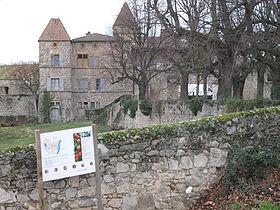 |
||
| Château de la Gallée |
The name of Etienne Favier appears in 1933. In
association with a Mr Guillot,
he began his bus services on 11th April 1933 (the date according to
official records). Three routes were started:
- Millery to Lyon via Irigny,
with 4 returns daily (6 on Sundays and Bank Holidays)
- Millery to Lyon via St. Genis
Laval, also 4 returns daily (6 on Sundays and Bank Holidays).
- Millery to Givors –
this rather discrete route seems to have been limited to one market trip on
Fridays, plus a service on Fair Days (Jours de Foire). That was certainly the case by 1953 when the bus
left Millery at 08.00 and returned from Givors at 11.00.
Before the start of operations, in March, the Préfet and other operators were duly informed, with the OTL
objecting as usual to operators encroaching on its urban territory. This will
have undoubtedly been settled by a ban on carrying local traffic in Lyon. The
terminus for the Lyon routes was Quai Rimbaud.
In 1936 Mr Guillot informed the Préfet that his association with Etienne Favier had been
brought to an amicable end on 31/08/1936. Mr Guillot transferred all his rights to Etienne Favier, and
disappeared from the scene.
On 16 April
1936 the
CTD requested information on the vehicles authorised
to carry ‘messageries’ (packets up to a maximum of 50
kgs). This produced an overview of the fleet:
823 C16 Saurer -
1933 33+10 replaced by
2516 PF 7
585 PF 4 Berliet 22hp
1933 43+3
6111 PF 4 MLB
(Léon Bollé)
29+12
replaced by 532 PF 6
8504 PF 5 Berliet 16hp 250
kg
1934 27
2516 PF 7 Berliet 19hp 150
kg
30+10
532 PF 6 Bernard
19hp 200 kg
1934 29+10
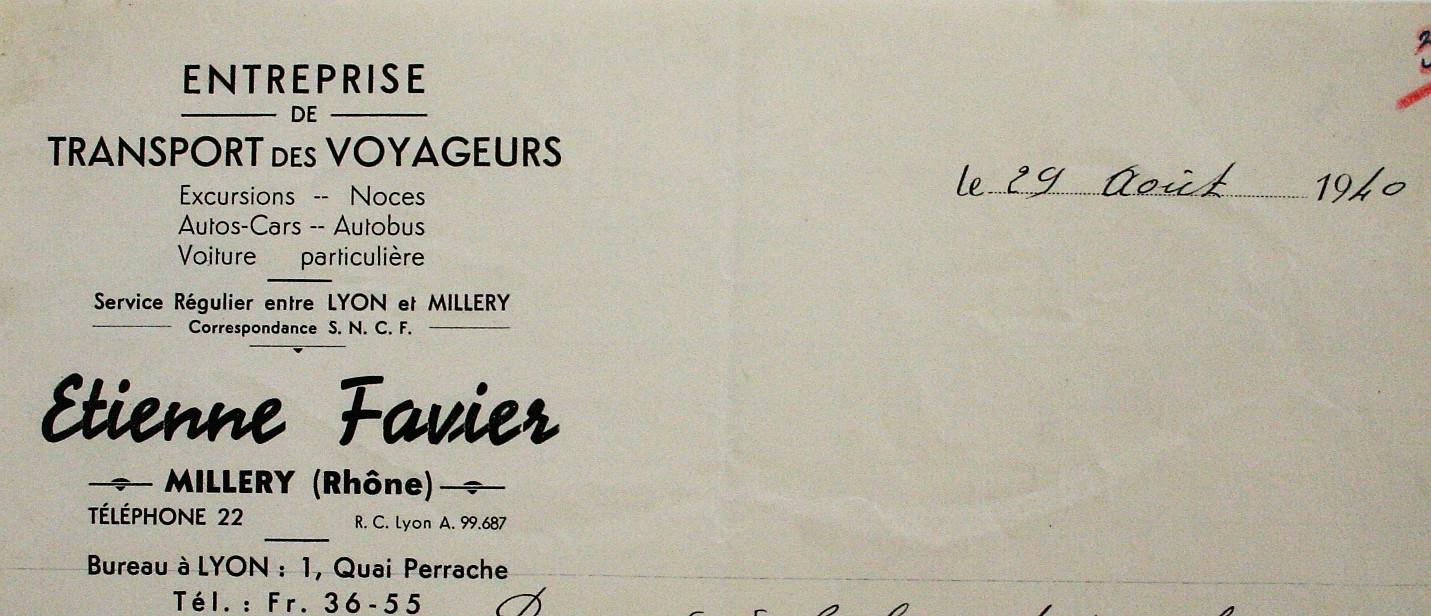
Often, wartime files are sparse, but in the
Lyon area, recorded complaints were numerous, mainly because the travelling
public had not assimilated the need for economies. Here are some examples.
Overloading was commonplace, and frequencies
very reduced.
An Inspector’s report on 17th
September 1940 recorded that under the “Plan Armistice” (regulation of
transport to ensure best use of resources) Favier was at that time allocated
just two returns –
Departures from Millery
at 06.45 and 13.00
Departures from Lyon at 11.00 and 18.30
But he was found to be operating an additional
third trip on Sundays. The inspector deemed that that was necessary and it
would be regularized shortly by an “arrêté préfectoral”.
The interurban buses had seating for 30 and in
wartime were authorized to carry 10 standing. But Favier’s buses had a further
5 to 12 standing. The Inspector pointed out that this had to be tolerated on
relatively short journeys. All operators were in the same position, and the
alternative – to increase the number of vehicles – was unthinkable
in view of the difficulties in obtaining tyres,
diesel etc.
Passengers accused Favier of not issuing season
tickets. In fact, Favier had wrongly continued issuing these and the Préfecture had had to call him to order. Only a very
limited number of categories of persons had the right to a cheaper season
ticket: passengers were blaming the operator for a decision taken by the
authorities.
Finally, the public was angry that “mutilés de guerre” (war wounded) were refused free or
reduced price travel. This was another bone of contention. Simplifying matters
slightly, the law gave them the right to free or reduced price travel on
nationally regulated transport (rail), but not on locally regulated transport
(bus). Once again the operator was being blamed for obeying the law!
The calculations for allocation of fuel took up
a lot of energy, as we have seen in other files.
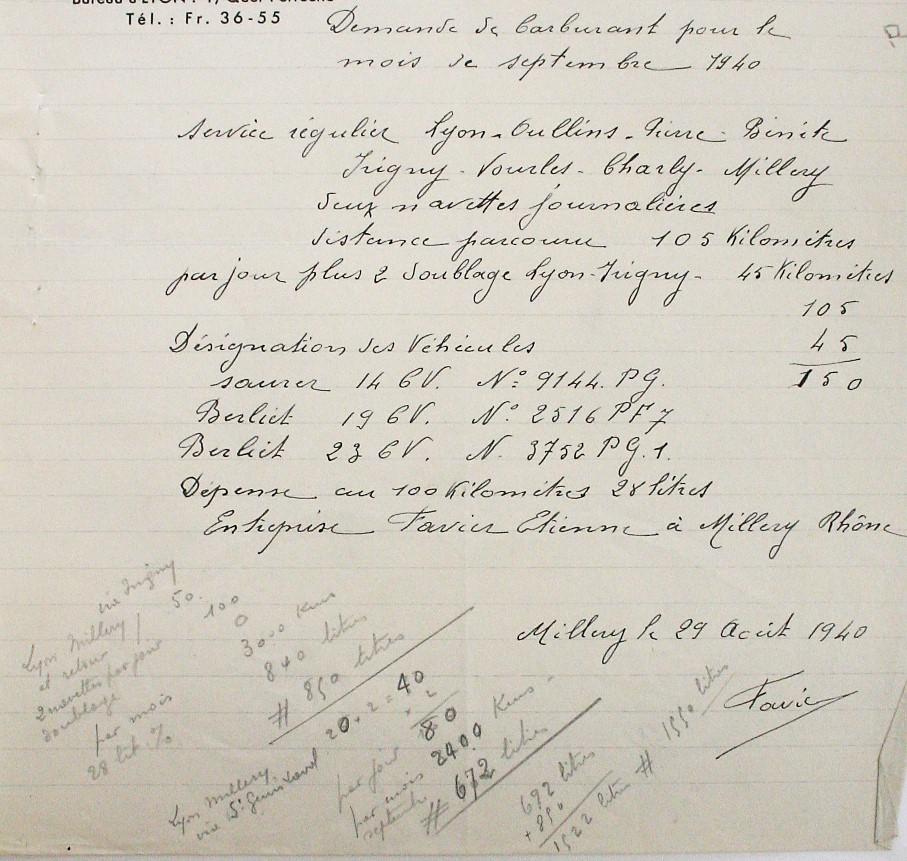
You can read that the claim was for 150 kms per day (105 for the 2 Millery
– Lyon returns, and 45 for 2 duplicates running Lyon – Irigny).
Three vehicles were allocated:
9144 PG Saurer
2516 PF7 Berliet
3752 PG1 Berliet
After a further calculation based on the fuel
consumption of the three buses, the claim for fuel is rounded up to 1,550 litres, presumably for one month.
Everything was now controlled, and on
15/02/1941, Favier had to request a licence to
purchase a Berliet with seating for 29/36 passengers.
By September 1942, the ‘Plan Armistice’ had
become the ‘Plan Minimum’, with a certain amount of relaxation. Favier was now
back to 6 daily returns Millery – Lyon, with
two itineraries, one via St. Genis Laval and Vourles, the other via Pierre-Bénite
and Irigny. It is recorded that the Irigny route had been run by Planier
as from 1926, then by Mr Aubard
from 1931 to 1933, when Favier took over.
Departures from Millery
at 7h, 13h, 18h.
Departures from Lyon at 11h, 17h, 19h.
The vehicles used now were:
One bus operating on wood (gazobois),
seating for 29, standing for 20, but regularly carrying 60
One bus operating on Gaz
de Ville, seating for 19, standing for 10, but regularly carrying 50
One diesel bus of the same capacity, but used
only as a reserve for duplicates.
We move on now to 1968.
Etienne Favier decided to incorporate his
business as a limited company. Thus was registered as LES CARS FAVIER S.A. with
a capital of 230,000 F, based at rue des Volontaires,
Millery – RC Lyon 68B230. This enabled him to
involve his family financially in the business,
Etienne Favier
310 shares
Juliette Favier
née Galland 10
Julien Pingon
50
Francia Pingon née Favier 10
Henri Thomas
50
Josette Thomas
née Favier 10
Jean Favier
10
The other shareholders would appear to have
been his wife, son, daughters and sons-in-law.
For some reason, he did not transfer his
excursions licences to the new company, but preferred
to retain them in his own name (69 5401 to 69 5403 and B69 5404) and rent them
to the company.
Much earlier, they had been issued to Favier-Guillot for three vehicles
532 PF6 Bernard
8504 PF5 Berliet
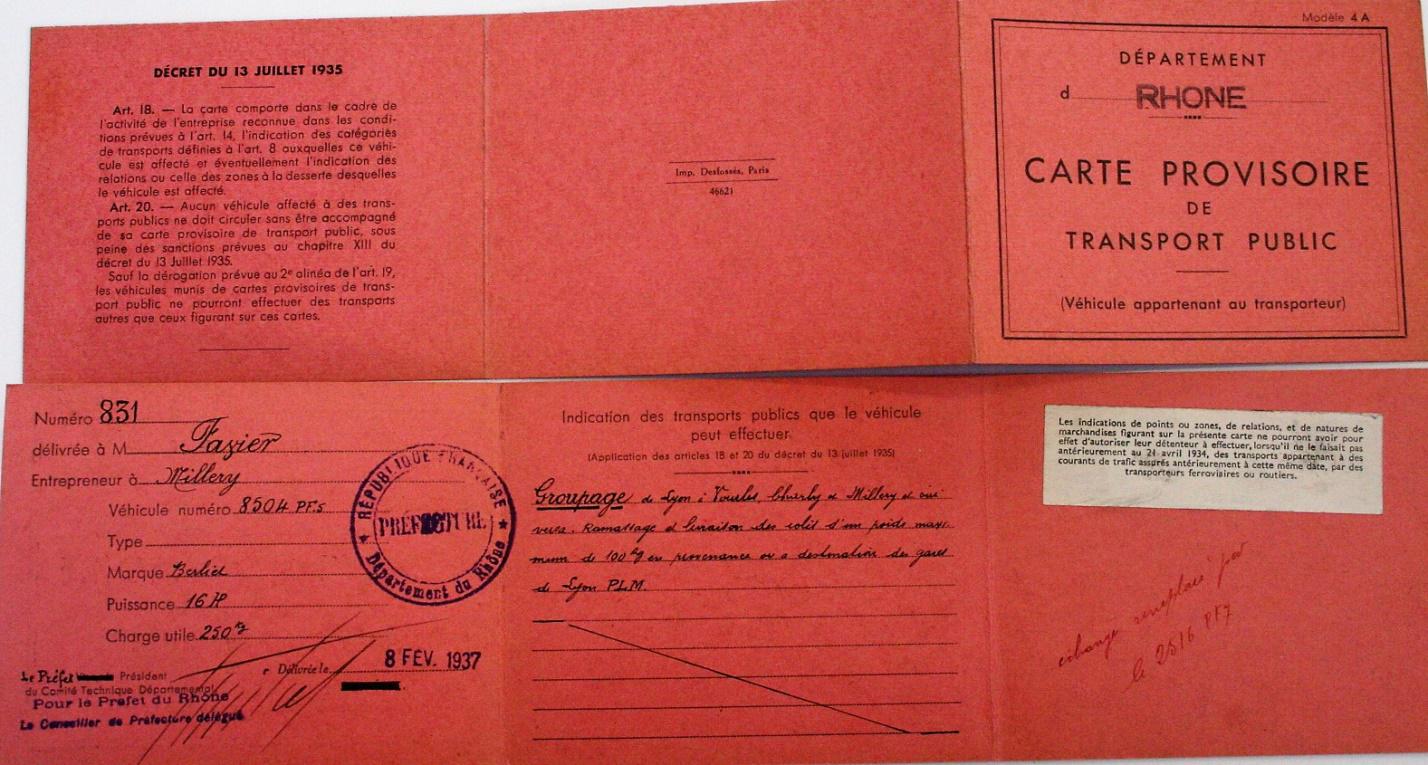
Vehicles
transferred to the new company were :
4114 CV 69 Berliet PHN8
15/06/1967 27/03/1964 valued at 40.000
F
8720 BM 69 Berliet PHC8
10/04/1964
valued
at 25.000 F
8984 BX 69 Berliet PHN8
12/02/1964
valued
at 30.000 F
7856 BU 69 Saviem SC1
29/01/1963
valued
at 30.000 F
To comply
with the law, the ‘sale’ document had to include three years’ figures. In this case -
1964 Turnover 369.389
F Profit 26.937 F
1965 Turnover 388.502
F Profit 30.879 F
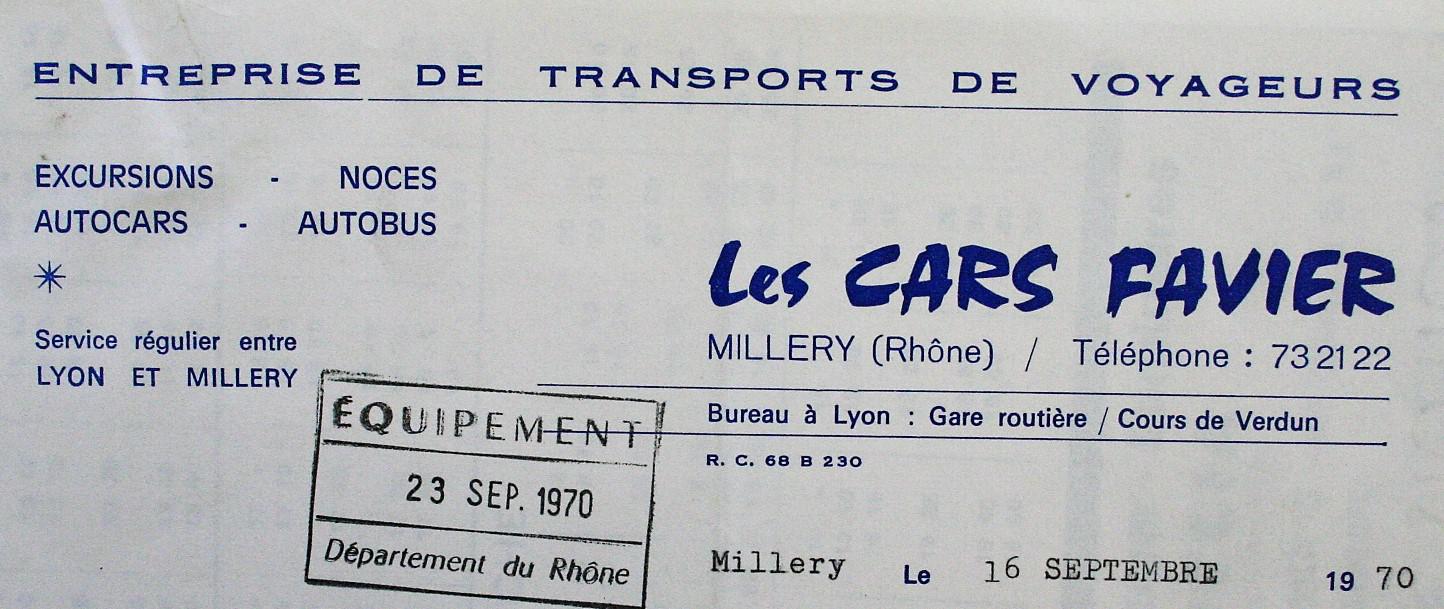
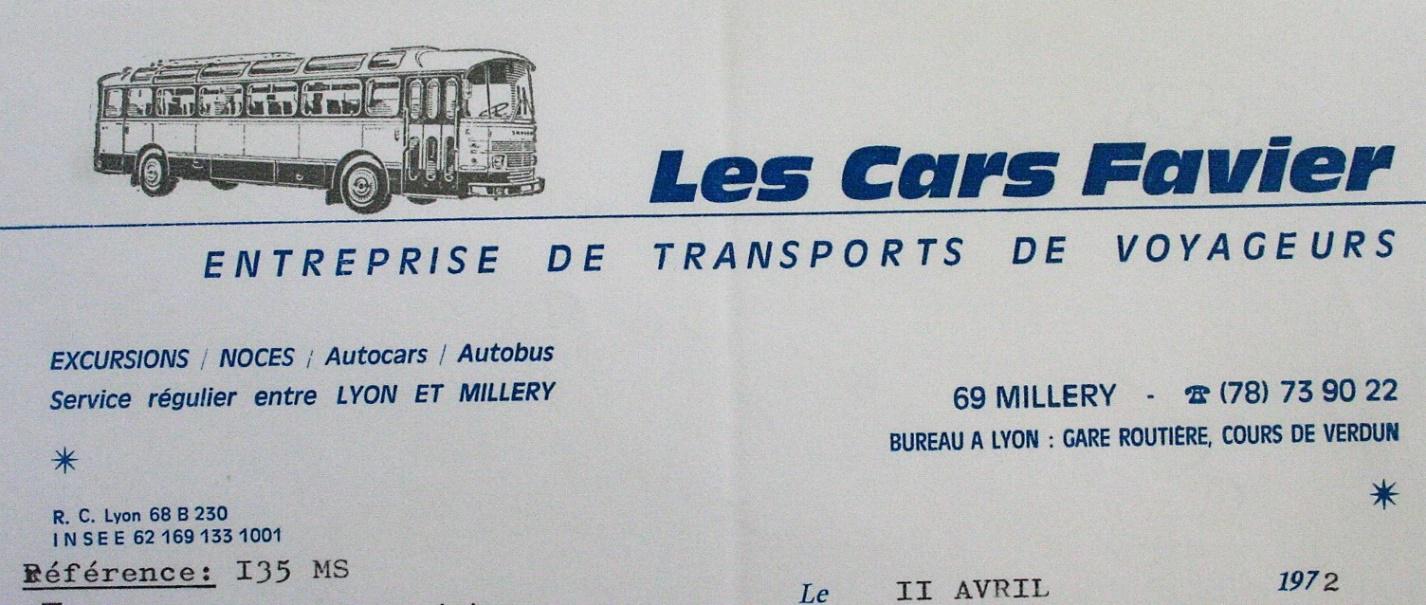
Headed notepaper in 1972
By 1975, the catchment area for Lyon’s urban transport had been extended to correspond with the limits of the COURLY (Communauté Urbaine de Lyon). One consequence was a ‘forced sale’ of Favier’s Irigny-Lyon route to the Syndicat des TCRL. This entailed a restructuring of the remaining Millery-Lyon route.
These timings were tested for a month beginning on 1st June 1975. On the same day, TCL began running their replacement route 15 from Bellecour to Irigny.
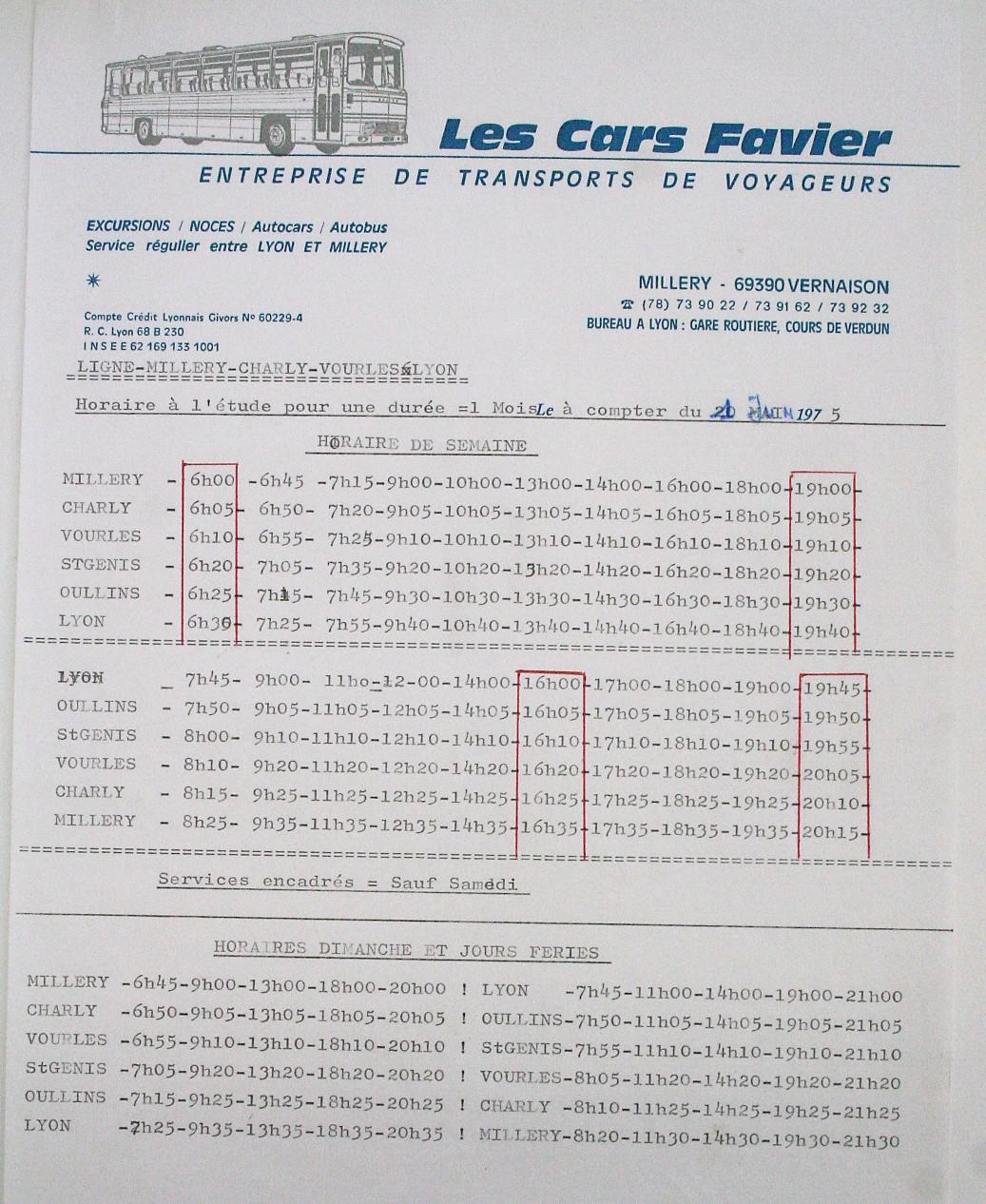
In 1977 a contract previously signed to provide
schools journeys on the Vernaison – Irigny – Yvours corridor was
extended to include a sixth vehicle at an additional daily cost of 988.02 F
TTC.
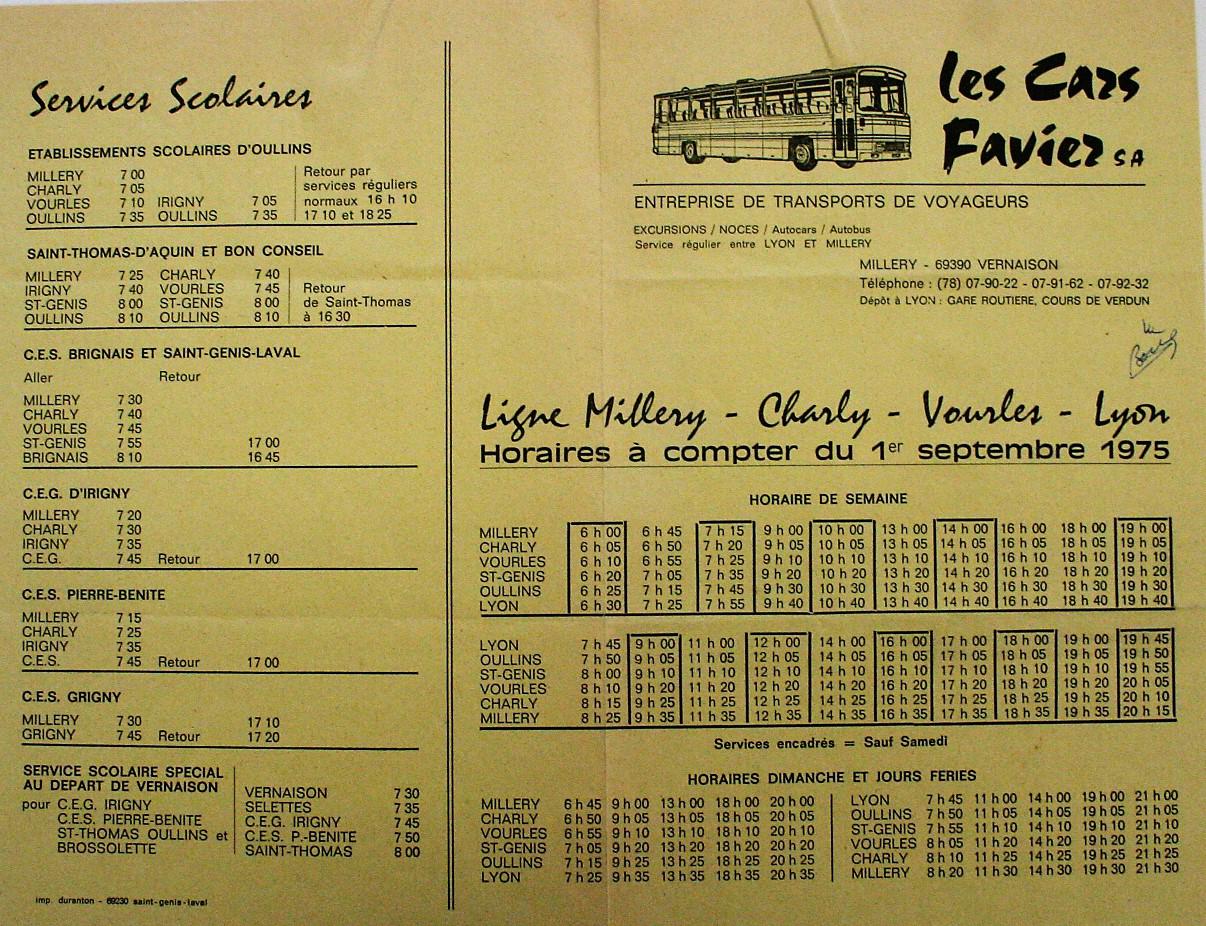
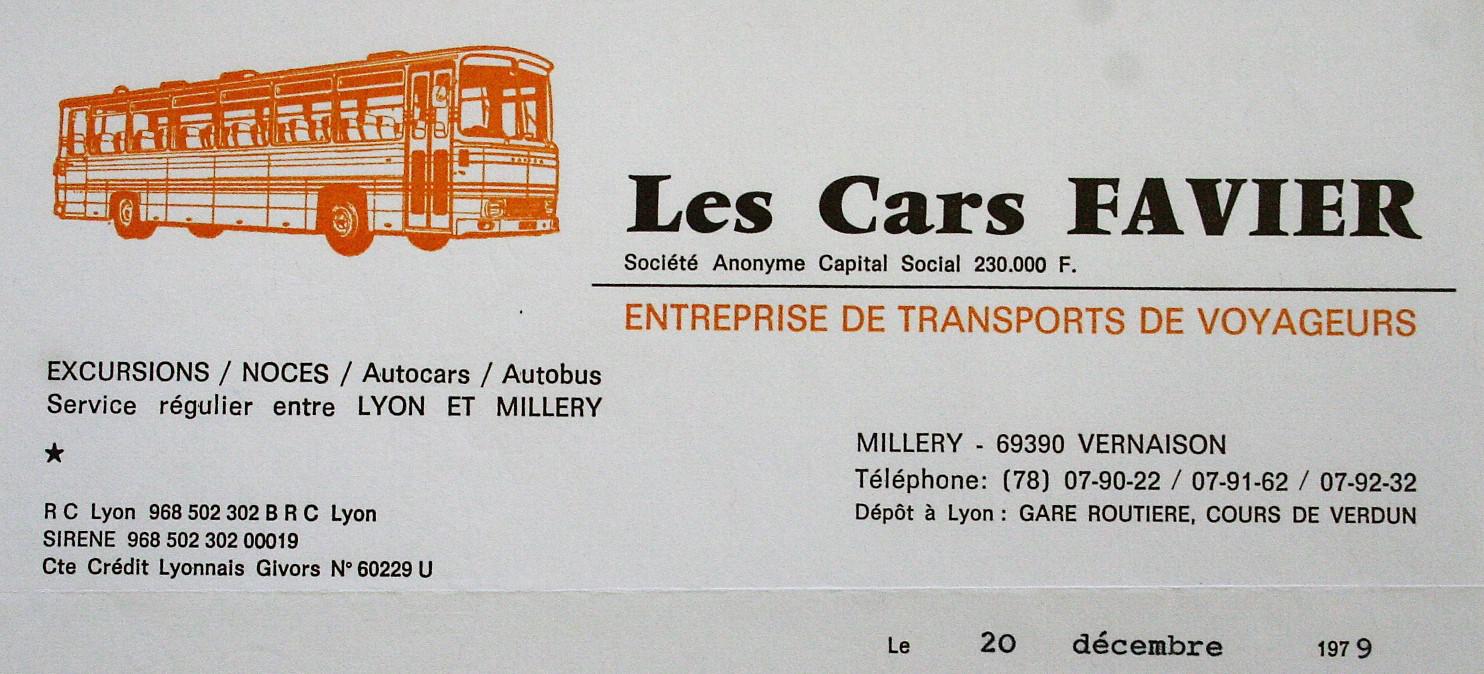
A new works contract was won in 1986 when Poulard SA signed up for staff transport at a contract
price of 98,000 F.
In 1994, the Verney group bought Favier, but it
continued to be run as a separate subsidiary for 10 years until in December
2004, it was finally integrated and the business was renamed Connex Rhodalia.
| DORSET
(RURAL) |
DORSET (URBAN) | SOMERSET |
WILTSHIRE |
HAMPSHIRE |
| FAROE ISLANDS | FRANCE (NATIONAL) | FRANCE (REGIONAL) | ISLE
OF SKYE |
LINCOLNSHIRE |